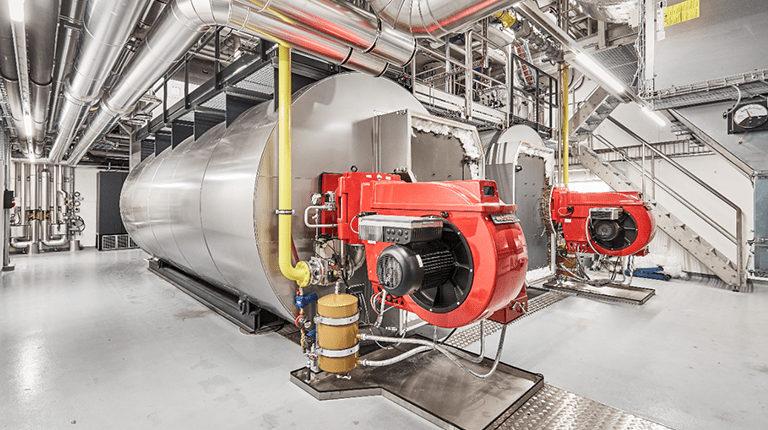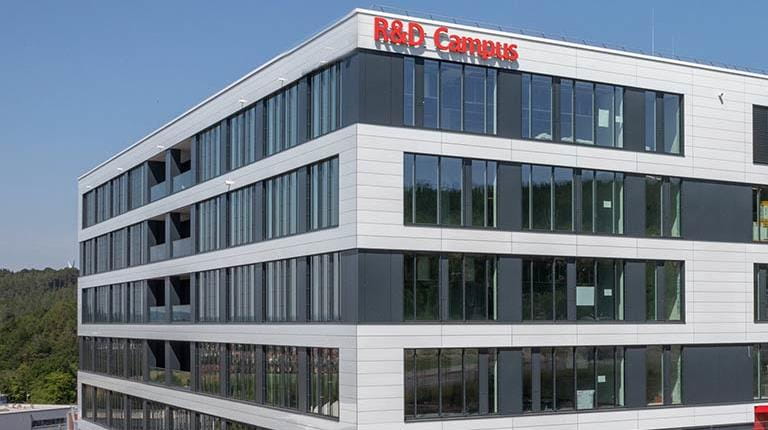
Energy
Energy & Emissions
The main sources of energy for CSL’s manufacturing facilities are electricity and natural gas. Steam and compressed air are imported onto the Marburg, Germany, facility as energy sources. Small amounts of diesel, gasoline and heating oil are also used as energy sources. For our CSL Plasma network of centres, electricity is the main source of energy. Combined, our manufacturing facilities and CSL Plasma’s centres contribute most of CSL’s energy consumption and therefore greenhouse gas emissions. Following the adoption of our sustainability strategy in 2021 we have undertaken detailed analysis of our current and projected footprint and the short and near-term decarbonisation levers available. As a result, we have set emissions reduction targets for 2030.
Emissions Reduction Commitments
As part of our broader sustainability strategy to build a more sustainable future for employees, communities, patients and donors, in 2022 CSL announced new carbon emissions reduction targets that serve as a transparent roadmap to decarbonise global operations by cutting direct and indirect carbon emissions.
At the end of May 2025, the Science Based Targets initiative (SBTi) approved CSL’s near-term science-based emissions reduction targets. These are:
- CSL commits to reduce absolute Scope 1 and 2 greenhouse gas emissions by 42% by FY2030 (from a FY2021 base year)¹.
- CSL commits that 73.1% of CSL’s suppliers by emissions – covering Scope 3 categories: purchased goods and services, capital goods, upstream transportation and distribution, business travel, and downstream transportation and distribution – will have science-based targets by FY2030.
¹In 2022, CSL announced its initial target to reduce emissions associated with its own operations by 40%. This target has since been updated to 42% to align with the SBTi’s reporting period for calendar years. CSL’s Scope 3-related target, approved by the SBTi (as outlined above), is part of CSL’s broader intention to engage suppliers who account for 67% of all CSL’s total Scope 3 emissions. CSL aims for these suppliers to have Scope 1 and 2 emissions reduction targets aligned* with the SBTi. This broader intention applies to suppliers across all Scope 3 categories.
The target boundary includes land-related emissions and removals from bioenergy feedstocks.
*Either the supplier has SBTi-validated targets, or CSL has conducted due diligence to confirm that the supplier’s targets meet SBTi criteria.
|
|
Scope 1 |
Scope 2 |
Scope 3 |
|
Target |
CSL commits to reduce absolute Scope 1 and 2 greenhouse gas emissions by 42% by FY2030 (from a FY2021 base year)*.
|
CSL commits that 73.1% of CSL’s suppliers by emissions – covering Scope 3 categories: purchased goods and services, capital goods, upstream transportation and distribution, business travel, and downstream transportation and distribution – will have science-based targets by FY2030. |
|
|
Key abatement levers over the target timeframe |
|
|
|
|
Definitions |
Scope 1: Controlled by the company, e.g., emissions from combustion in owned or controlled boilers, furnaces, or vehicles. |
||
Energy Efficiency Initiatives
Examples of energy efficiency case studies across our organisation include:

Bern, Switzerland
- We strive to reduce the environmental impact of our operations through innovative and smart processes, by systematically saving resources and emissions and increasing reuse, recycling and awareness.
- One project to realise our commitment to reduce the environmental impact of our operations through innovative and smart processes was the replacement of three 27-year-old process steam boilers and the decommissioning of two combined heat and power plants. Steam is mainly used for various heating purposes during the production process largely for sanitization, the distillation of water for injection (used as excipient and for cleaning) and recovering of ethanol (used for the fractionation process)
- In addition to improved efficiency of the steam system, equivalent to 980 tonnes CO2-e reduction per year, further advantages of this project are the future delivery of steam for Bern’s two new immunoglobulin modules, and vastly improved redundancy of the steam system.

Marburg, Germany
- The research and development (R&D) campus in Marburg, Germany, sees our R&D colleagues along with external partners collaborate under one roof in state-of-the-art work spaces and in highly innovative laboratories.
- While the new building seeks to fuel R&D innovation, innovation has also been fundamental in the design of the building. An innovative sustainability-driven heating and cooling feature has been installed. Heating and cooling will be provided by heat pumps plus an innovative ice storage system, which will be one of the largest ice storage facilities in Europe. At the end of the heating period, the water in the ice storage begins to freeze and this stored cold can be used at no expense for cooling during warmer periods. This system reduces primary energy consumption by about 37% below the minimum standard required by law. The new building is expected to reduce CO2 emissions by 1,870 tonnes per annum.

Melbourne, Australia
- In November 2020, CSL Seqirus announced the build of the only cell-based influenza vaccine manufacturing facility in the Southern Hemisphere, producing seasonal and pandemic influenza vaccines, CSL Seqirus proprietary adjuvant and Australian antivenoms and Q-Fever vaccine.
- onsite renewable energy generation;
- electrification of plant to reduce reliance on natural gas;
- heat recovery from waste management processes;
- reclaim water reuse;
- embedded night setback operating mode for suitable spaces when activity levels are low;
- electric car and bicycle charging stations;
- detailed waste management and circular economy plans to minimise construction and operations waste; and
- reuse of recycled materials in construction.
The facility will be built at a green-field site in Tullamarine, Victoria, Australia and is currently designed to feature best-in-class sustainable design features including, to name a few:
The facility is expected to be operational in 2026 and will seek certification to the Green Building Council Australia’s Green Star building rating.



